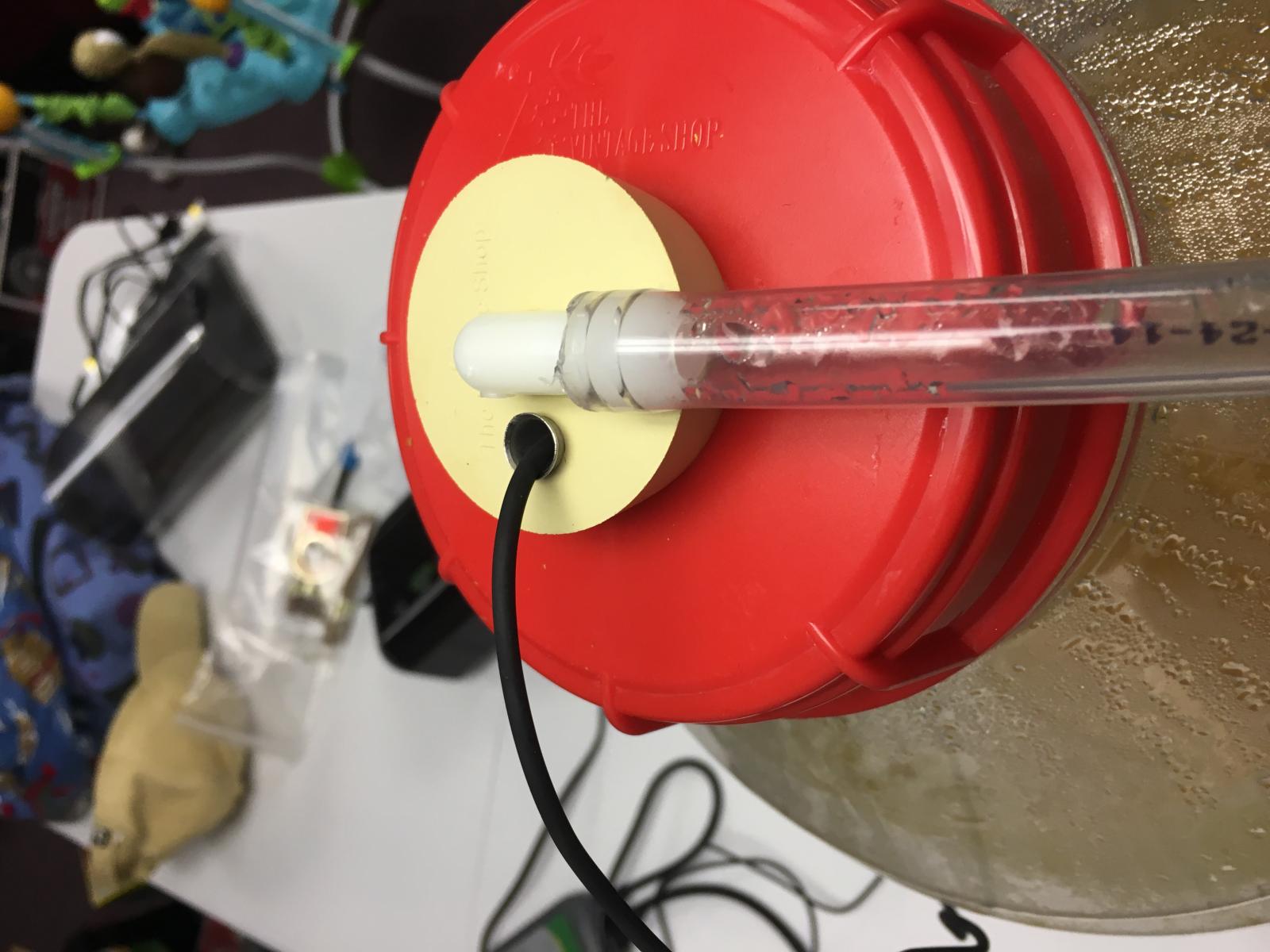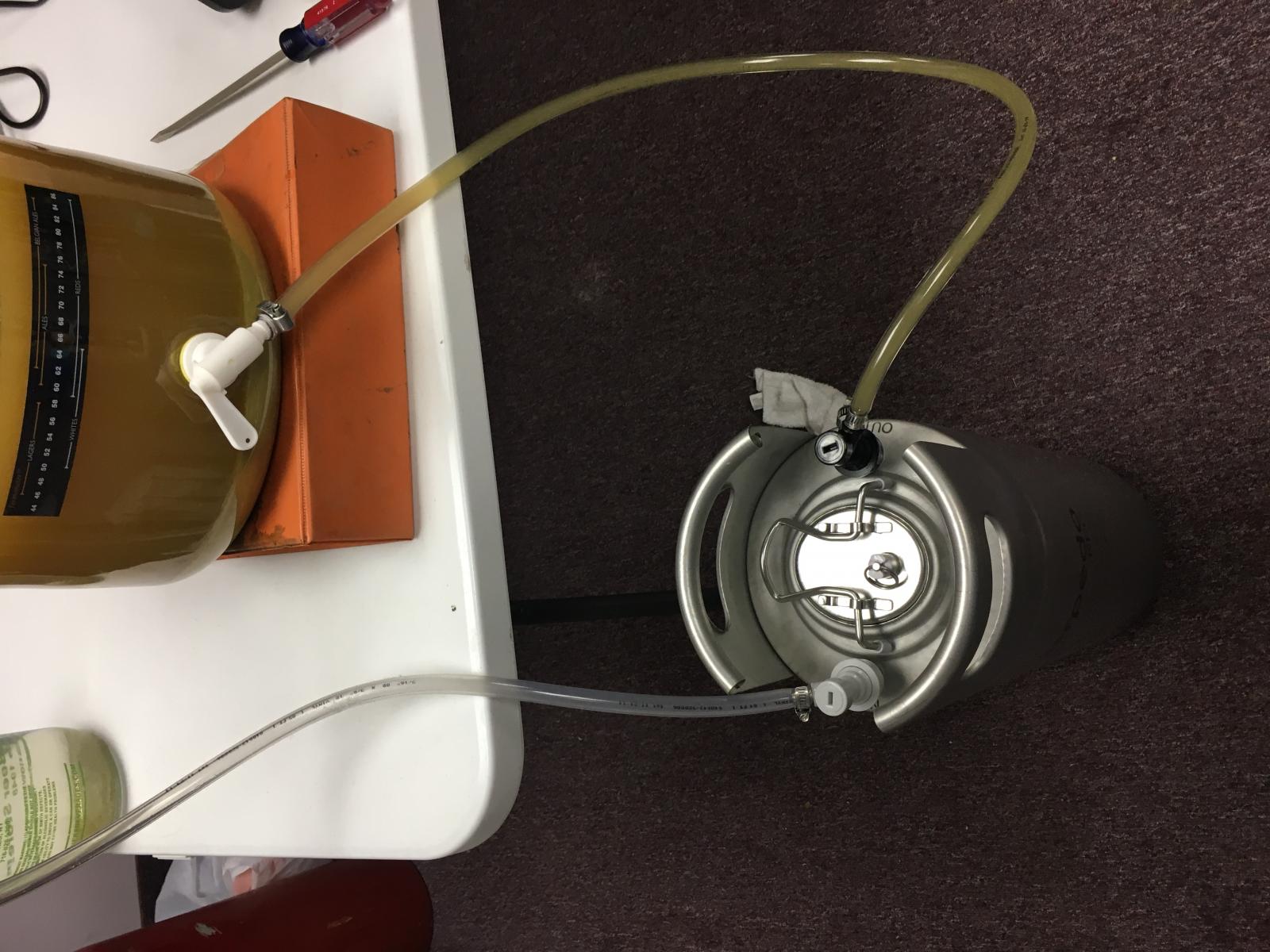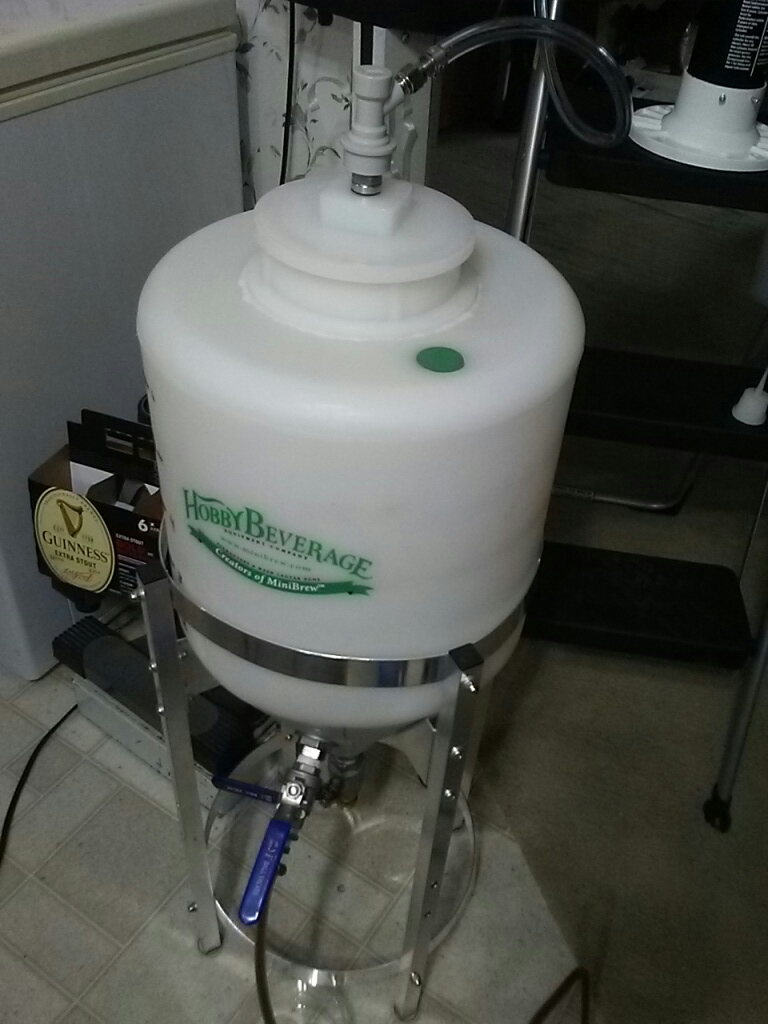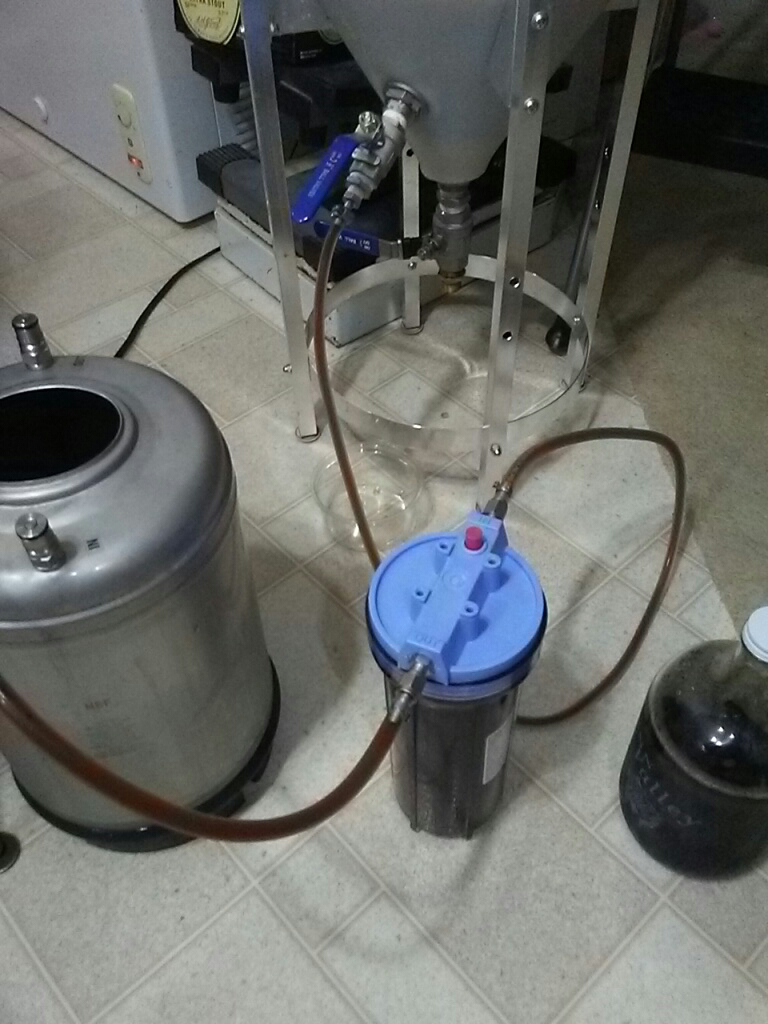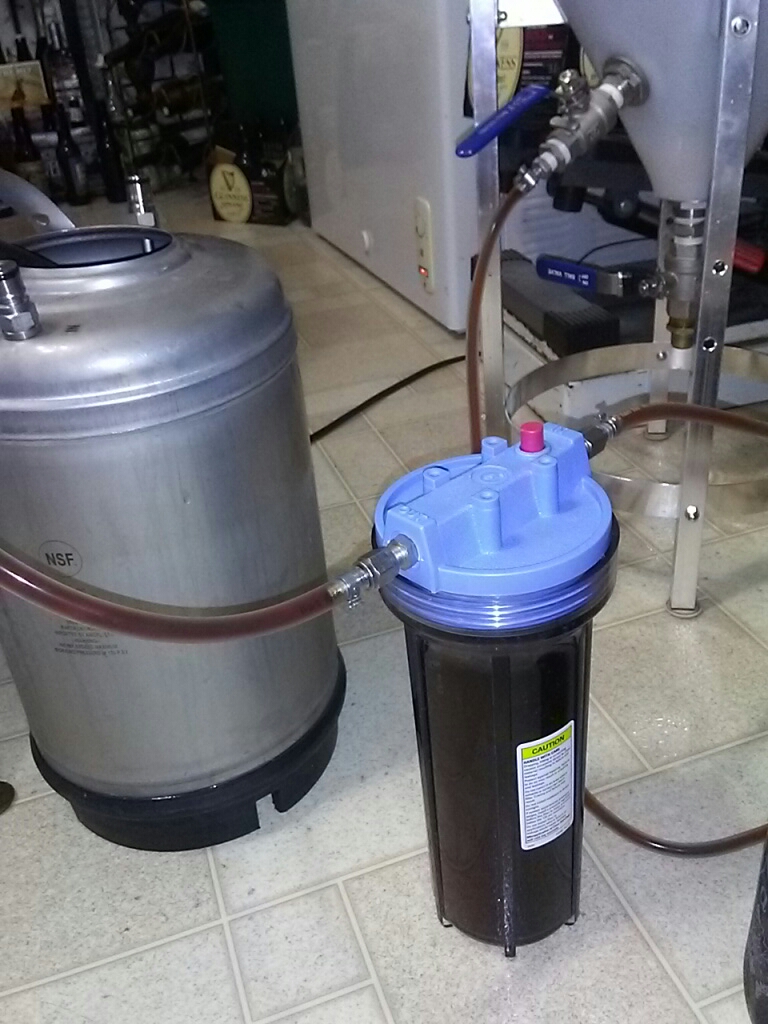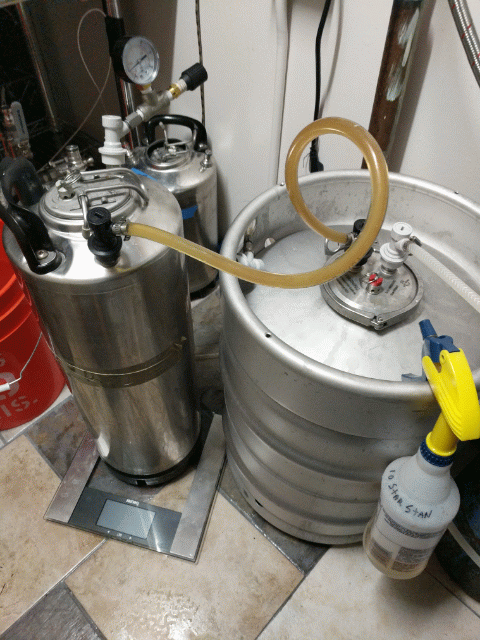The key to purging the keg with water/sanitizer is to:
1. Fill the keg as completely as possible to displace as much air as possible.
2. Replace as much of the water/sanitizer as possible with CO2 (or another inert gas).
With corny kegs there are 2 pitfalls to #1.
-First, the gas dip tube sits about 1/2" into the keg. This means any air above that point won't make it out.
-Second, the lid is a huge reservoir for air. The PRV valve also sits down about 1/2" into the lid so anything above that point can't be removed either with standard length gas dip tube.
Here's how I resolve this problem:
When I'm transferring the Star-San from the target keg to another, as the target keg empties it drives bubbles into the second keg from the bottom of the OUT dip tube. This creates a lot of bubbles of....you guessed it...CO2.
I let it bubble by connecting/disconnecting the QD on that OUT side. When I get the headspace full of bubbles, then I insert the lid sidewaysinto those bubbles, keeping them coming up from the bottom. The end result is a headspace that is full of CO2 bubbles, NOT air.
And thus that keg, which will be the target keg next time, is full of Star San and CO2. When it comes time to purge it, same deal--what's left over is CO2.
Doing this I don't need to trim the dip tube.




























![Craft A Brew - Safale BE-256 Yeast - Fermentis - Belgian Ale Dry Yeast - For Belgian & Strong Ales - Ingredients for Home Brewing - Beer Making Supplies - [3 Pack]](https://m.media-amazon.com/images/I/51bcKEwQmWL._SL500_.jpg)




























